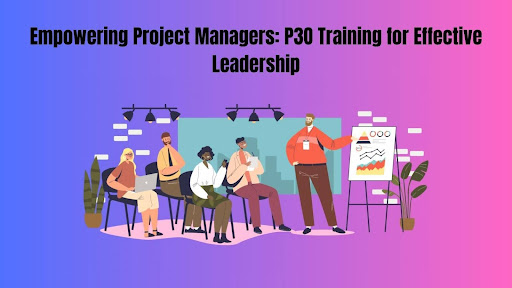As an integral part of project management, strong leadership is the key to the success of the projects. Project, Programme, and Portfolio Offices (P3O) establish a structured environment, equipping the project managers with the required tools and competence to manage complexity effectively and deliver the programs. But above all What is P3O and how does it help project managers to achieve their goals more efficiently? Here in this blog, we explore the benefits of P3O Training as a basis for effective leadership in project management.
Table of Contents
- Understanding P3O
- Benefits of P3O Training for Project Managers
- Essential Components of P3O Training
- Implementing P3O Principles in Project Management
- Case Studies
- Future Trends and Considerations
- Conclusion
Understanding P3O
P3O represents a comprehensive approach to project governance, encompassing three distinct levels: PMP, PMP, and PMP. Fundamentally, P3O’s principle objectives include the integration and alignment of projects on one hand, and of decision-making processes on the other, as well as the resource utilization optimization on the landscape of projects. P3O focuses on strategy and flexibility, thus creating alignments within organizations in a custom-made way.
Benefits of P3O Training for Project Managers
P3O training can offer several opportunities to those project managers who desire to develop and empower their leadership capacities. For the first, this generally give them the global picture of project management, and thus managers can use projects as the roadmaps to achieve the strategic objectives and organizational priorities. Moreover, P3O training gives managers such strategic approaches that allows them to cope with any uncertainties and risks while minimizing precautions.
Also, P3O training builds a culture of lifelong learning which in turn provides the managers with a sense of ability to further enhance processes and operational effectiveness in project environments.
Essential Components of P3O Training
P3O training encompasses a range of essential components designed to equip project managers with the requisite skills and knowledge. Key elements include:
The level of governance is one of the important factors of P3O, which comprises three parts, those are: project, program, and portfolio governance frameworks.
Learning effective decision-making skills such as prioritizing projects, allocating resources and risk mitigation.
Tracking project performance by using processes and performance indexes to measure the course of the endeavor and to keep strategic targets.
Designing plans to involve stakeholders meaningfully and mediate different stakeholders’ interests is the other task at hand.
Adopting change management processes to ensure a ‘seamless shift and minimization of change’ within the project roadmap.
Implementing P3O Principles in Project Management
After the P3O training, project managers read into how these ideas can be integrated into their workmanship. This implies goal correspondence between the projects and the organizational strategy, strong governance, and effective analysis tools for guiding projects towards a positive outcome. The incorporation of the principle of P3O into the project management processes can allow the managers to increase accountability, transparency, and eventually the performance of the projects as a whole.
Case Studies
An increasing number of companies have successfully established the integration of P3O training into project management practices resulting in real, observable achievements. For instance, one can point to the example of the multinational corporation that had streamlined its project portfolio using the P3O concept and there is a 20% increase in project delivery efficiency. Similarly, a public organization enhanced stakeholder support and decision-making processes with the help of P3O training, the result of which was 15% less project delays and cost overruns.
These case studies thus can be used to highlight how the effectiveness of project management is enhanced through P3O training.
Future Trends and Considerations
As the P3O training is heading to the next level, there will be an issue of what to expect in P3O training development. Technologies on the horizon, like AI and predictive analytics systems, are going to completely transform how projects are being managed and the making of decisions. Moreover, the move to agile approach demands agile oriented re-design of P3Os to help manage agile project lifecycles and subdue dynamic stakeholder requirements. By staying abreast of these trends and considerations, organizations can ensure the continued relevance and effectiveness of P3O training in empowering project managers.
Conclusion
In conclusion, P3O training becomes a core foundation that equips project managers with the leadership skills and competencies to face uncertainties and achieve success. Through grasping the core attributes of P3O, supporting its indispensable elements, and uniting the concept with the project management process, managers can certainly see positive changes in the governance, proper resource allocation, and often the worthiness of organization. With the P3O training becoming a key investment in nurturing prosperous leadership and driving successful projects, as project management changes over time, this trend in the industry appears to be here for a long time. For more information visit: The Knowledge Academy.
